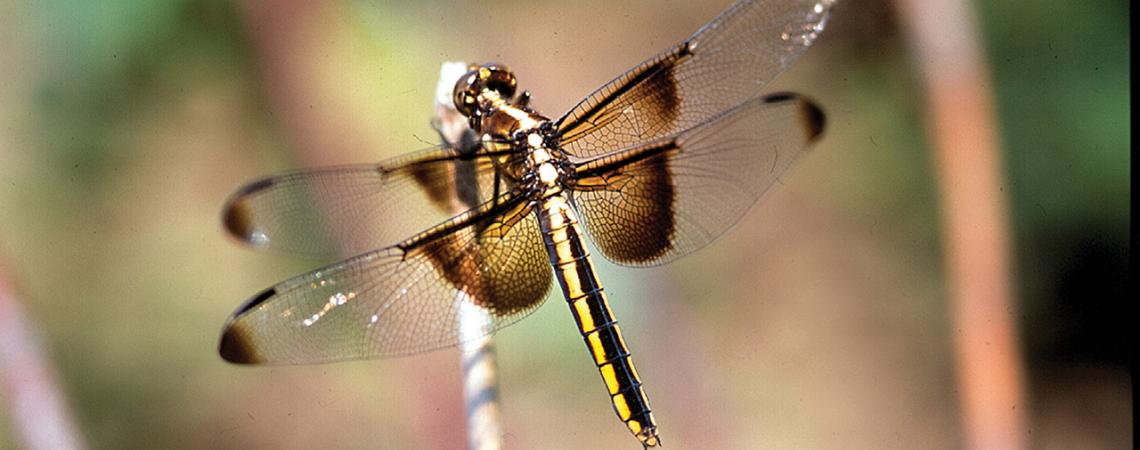A few tips and tricks can bring dragonflies to your backyard.
Dragonflies have long been considered a sign of good luck — and it seems with good reason. Much like hummingbirds, dragonflies are quite agile. They can fly both forward and backward with lightning speed, and can hover, dart, or change direction with ease. That aerial agility makes dragonflies highly efficient carnivores, with voracious appetites that help keep fly, gnat, and mosquito populations in check. They have even been known to snatch winged termites as they fly out of the ground. It’s no wonder that many consider these fascinating creatures a huge “good luck” asset for the garden and yard.
Species found in Ohio range from the petite elfin skimmer, which is less than an inch long, to the impressive darner, with wingspans up to 6 inches long. Of course, dragonflies range not only in size but in colors, including blues, greens, yellows, reds, and metallic hues. Some species may also feature various stripes and spots.
Though we usually picture dragonflies in flight, they actually live most of their lives in water, as larva and nymphs. Winged adults, in contrast, live only a month or two, and can venture far beyond their aquatic homes to nearby gardens and yards. With the right plants and water sources, you might just make your own garden or yard a favored perching, dining, and stopover destination.
Water wonders
Dragonflies need water to breed, lay eggs, and live their pre-adult lives. The winged adults also feed on insects found near water. As such, they are drawn to ponds, bogs, moist meadows, and wetlands, though you don’t necessarily need a large pond to lure dragonflies into your yard.
Any large pond in the area will support a large population of dragonflies that will venture out to nearby gardens and yards, and even a small water source may lure them to your outdoor space. Examples include a waterfall fountain, backyard fountain, bird baths with perching sticks laid on top, or a small pond kit in a size to suit your backyard needs. Even a water-filled plastic wading pool will often bring them in.
Feature dragonfly-friendly plants
The diverse trees and shrubs that serve as the foundation for any wildlife garden are especially valued by dragonflies as hiding places and sources for food. Adding nectar-rich flowers such as asters, cleome, coreopsis, goldenrod, lavender, rudbeckia, salvia, and zinnias heighten the attraction by offering a continual bug buffet.
If you have a backyard pond or water garden, be sure to stock it with aquatic plants and moisture-loving plants like cardinal flower, hostas, meadowsweet, or swamp milkweed.
Feature dragonfly amenities
Most dragonfly species need a minimum temperature of 50 degrees in order to fly. On cool, cloudy days, dragonflies bask on warm stones to raise their body temperature, so providing places to perch is one of the best ways to view these awesome creatures up close.
They will often perch on the small branches of trees and shrubs, so many of the plants in your garden can meet that need. Dragonflies also perch on anything from garden arbors and metal sculptures to bamboo poles used as a trellis for beans and cucumbers.
Make your garden a safe haven
Attracting adult dragonflies is exciting in itself, but to ensure their continual presence, your outdoor oasis must be a safe place for them to visit. So ban the bug zappers that kill flies, moths, and mosquitoes, as they will zap and kill the dragonflies as well.
Also, a no-spray policy is ideal, but if you must, then choose an organic option when spraying or using products in your garden, as pesticides and other chemicals that kill pest insects may also harm or kill dragonflies. Keep in mind that if you create a safe haven for dragonflies, they will return the favor by keeping mosquitoes, flies, and other pesky insects under control. Maybe they’ll even bring a bit of good luck your way.









